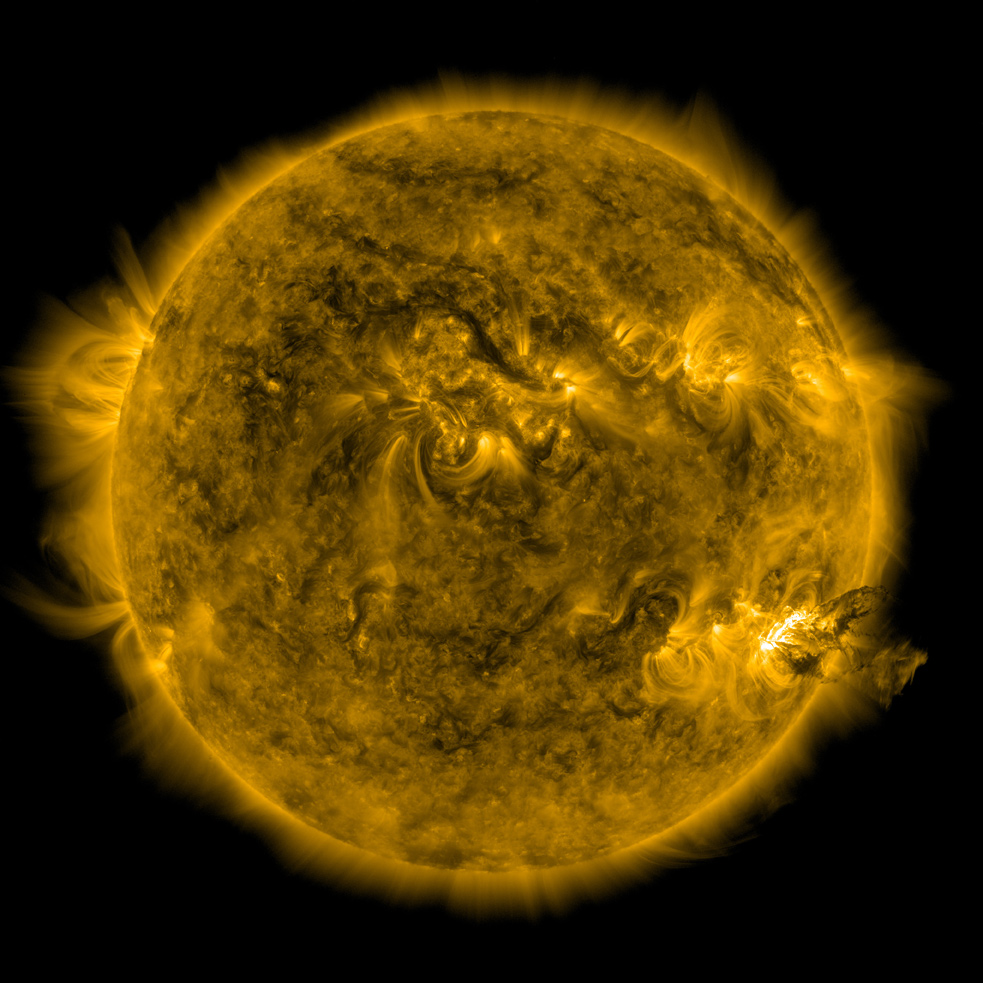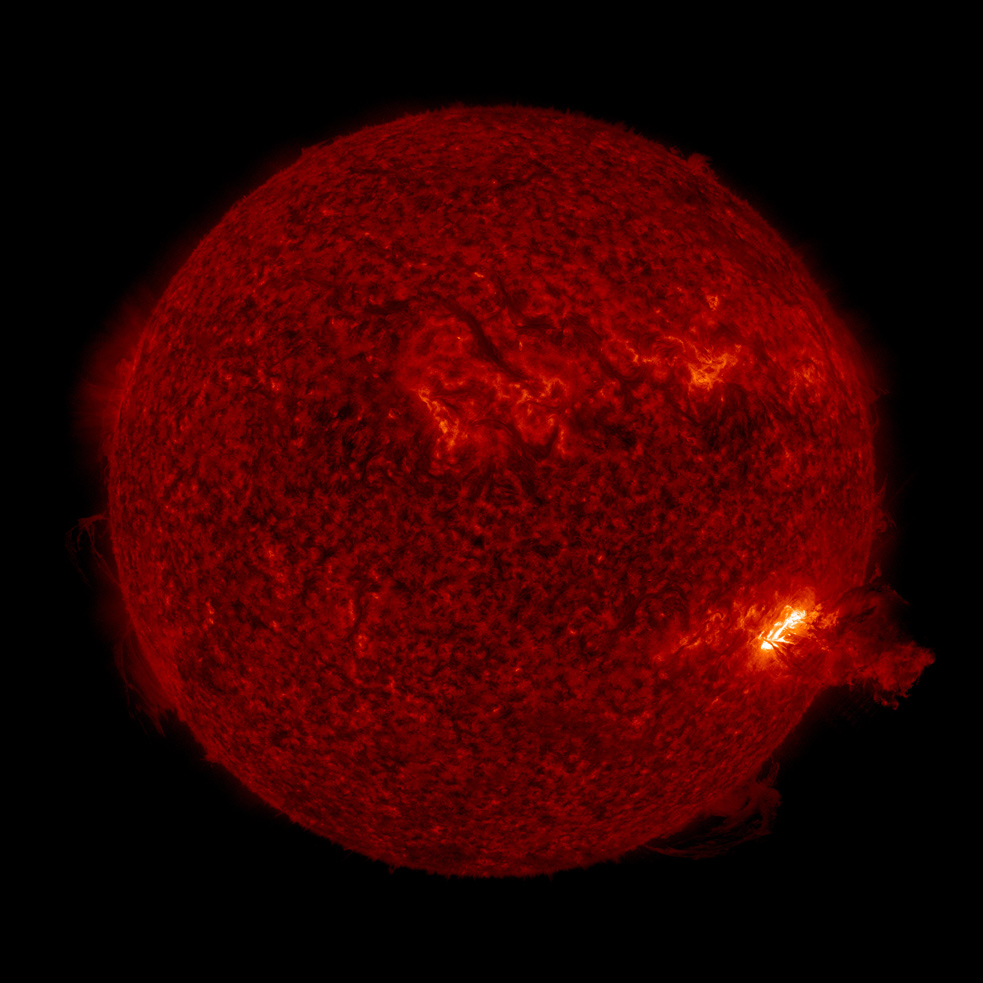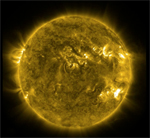Image List
-

This photograph from NASA's Solar Dynamics Observatory catches the beginning of the eruption that took place on June 7, 2011. At lower right, dark filaments of solar plasma arc away from the Sun. The plasma lofted off, then rained back down to create "hot spots" that glowed in ultraviolet light. This representative-color image shows light at a wavelength of 171 Angstroms (17.1 nm).
NASA / SDO / P. Testa (CfA) -

This photograph from NASA's Solar Dynamics Observatory catches the beginning of the eruption that took place on June 7, 2011. It shows light at a wavelength of 304 Angstroms (30.4 nm). A bright flare is visible at lower right, as well as hot, glowing plasma blasting outward.
NASA / SDO / P. Testa (CfA) -

This photograph shows our Sun on June 7, 2011, at the time of an eruption. The source of the eruption glows brightly at lower right. Material blasted outward only to fall back onto the Sun's surface. By studying this process, astronomers gained new insights into how young stars grow via stellar accretion. This photo was taken by NASA's Solar Dynamics Observatory. Red shows light at a wavelength of 304 Angstroms, green is 171 Angstroms, and blue is 335 Angstroms.
NASA / SDO / P. Testa (CfA) -

This time-lapse movie shows a solar eruption that happened on June 7, 2011. At lower right, material blasts outward from the Sun and then splashes down again, creating dramatic flashes of light when infalling blobs hit the solar surface. The images within this movie show light at a wavelength of 171 Angstroms, taken with NASA's Solar Dynamics Observatory.
NASA / SDO / P. Testa (CfA) -

This time-lapse movie shows a close-up view of infalling blobs of plasma impacting the Sun's surface. When they hit, the blobs are heated by a factor of 100 to temperatures of almost 2 million degrees Fahrenheit. As a result, they glow brightly in the ultraviolet. Arrows are inserted to highlight several of the impacts. The images within this movie show light at a wavelength of 171 Angstroms, taken with NASA's Solar Dynamics Observatory.
NASA / SDO / P. Testa (CfA)